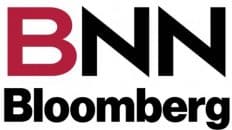By Rachael D’Amore — National Online Journalist — Global News
Monday September 16, 2019
Oil prices surged Monday in the aftermath of an attack on one of the world’s biggest crude oil processing plants, but analysts don’t anticipate a significant jump at Canadian pumps just yet.
“We’re going to dodge a bullet because of timing,” according to gas analyst Dan McTeague.
Typically, Canada transitions from summer- to winter-blend gasoline around Sept. 15. During this time, prices can drop anywhere from three to four cents.
The timing of the switchover, coinciding with the attack on oil supply, will likely help to mitigate a price hike in Canada, McTeague said.
Drivers “pretty much coast to coast” should still expect a five-cent increase on gasoline per litre come Wednesday.
If the incident overseas happened a few weeks earlier, that price could’ve been much higher, he said.
“For now, we’re in the clear,” he told Global News. “But should it [oil-supply disruption] go on longer. I would expect you’re going to continue to see upward pressure on prices.”
He predicted an increase of three cents per litre Monday morning. By the afternoon, it had jumped slightly, to five cents per litre.
Saturday’s drone attack on Saudi Arabia’s energy infrastructure cut off oil production and sent crude prices rising.
It interrupted approximately 5.7 million barrels of the kingdom’s crude oil production output per day, which is said to be more than five per cent of the world’s daily supply.
By Monday, oil prices surged more than 10 per cent.
The Houthi movement, an Iran-backed rebel group in Yemen, claimed responsibility for the attack. U.S. officials, however, have blamed the attacks on Iran.
Iran has denied any involvement, calling U.S. claims “maximum lies.”
Roger McKnight, a senior petroleum analyst at En-Pro International, said gas prices in Eastern Canada and those west of Thunder Bay are “linked” to the situation in Saudi Arabia.
He had a slightly grimmer estimate for Canadian gas prices come Wednesday, predicting the possibility of a six-cent hike.
“Fortunately, this time of year is what we call the shoulder period of demand, where the gasoline demand is pretty well flat after the driving season,” he said.
“But this is really unprecedented because we don’t know how long this is going to be going on.”
McTeague echoed McKnight’s sentiments and said the Saudi situation’s ability to impact the global market should not be discounted.
“There really isn’t a lot of spare oil capacity globally,” he said. “It doesn’t really matter how much of production is affected, it’s how long it’s out of commission and how long it will be before normal flows are restored. The world isn’t like it was several years ago where you had everyone producing or selling plenty of oil.”
Saudi Arabia is racing to restore oil production, but it could take weeks before full production capacity resumes.
If the situation is prolonged, the impacts could broaden.
The weekend attack led U.S. President Donald Trump to authorize the release of American strategic reserves, should they be necessary to help stabilize markets.
McKnight said that the strategic petroleum reserve won’t be enough.
“He may claim, ‘Well, we’re the largest oil producer in the world, we don’t need Saudi crude. A little message to Mr. Trump — you import seven million barrels a day of crude, a lot of it from Canada, but a lot of it also from Saudi Arabia and the Middle East.”
Trump later asserted that the U.S. is “locked and loaded” to respond to the weekend drone assault.
“We may not be so lucky the longer this goes on, especially if there is going to be military action or some kind of escalation of tensions,” warned McTeague.
Diesel prices are already feeling the effects, and if the situation overseas lingers, so, too, could gas prices.
“It’s a horrendous effect on diesel,” said McKnight.
“The diesel inventories in the states are down a lot so if we get an early winter and we got this crude situation, you can see diesel prices going through the roof, and gasoline prices tend to follow whatever diesel does.”
McTeague is predicting a five- to six-cent increase in diesel prices by Wednesday.
He warned that a surge in diesel could have a trickle-down effect over time — including getting food to the table.
“It’s likely that it will start to impact jet fuel, all modes of transportation fuel, and that will essentially start to make its way, felt within the next several weeks, at places we’d least want to see it — at the grocery checkout, the cost of home heating, etc.,” said McTeague.








Add comment